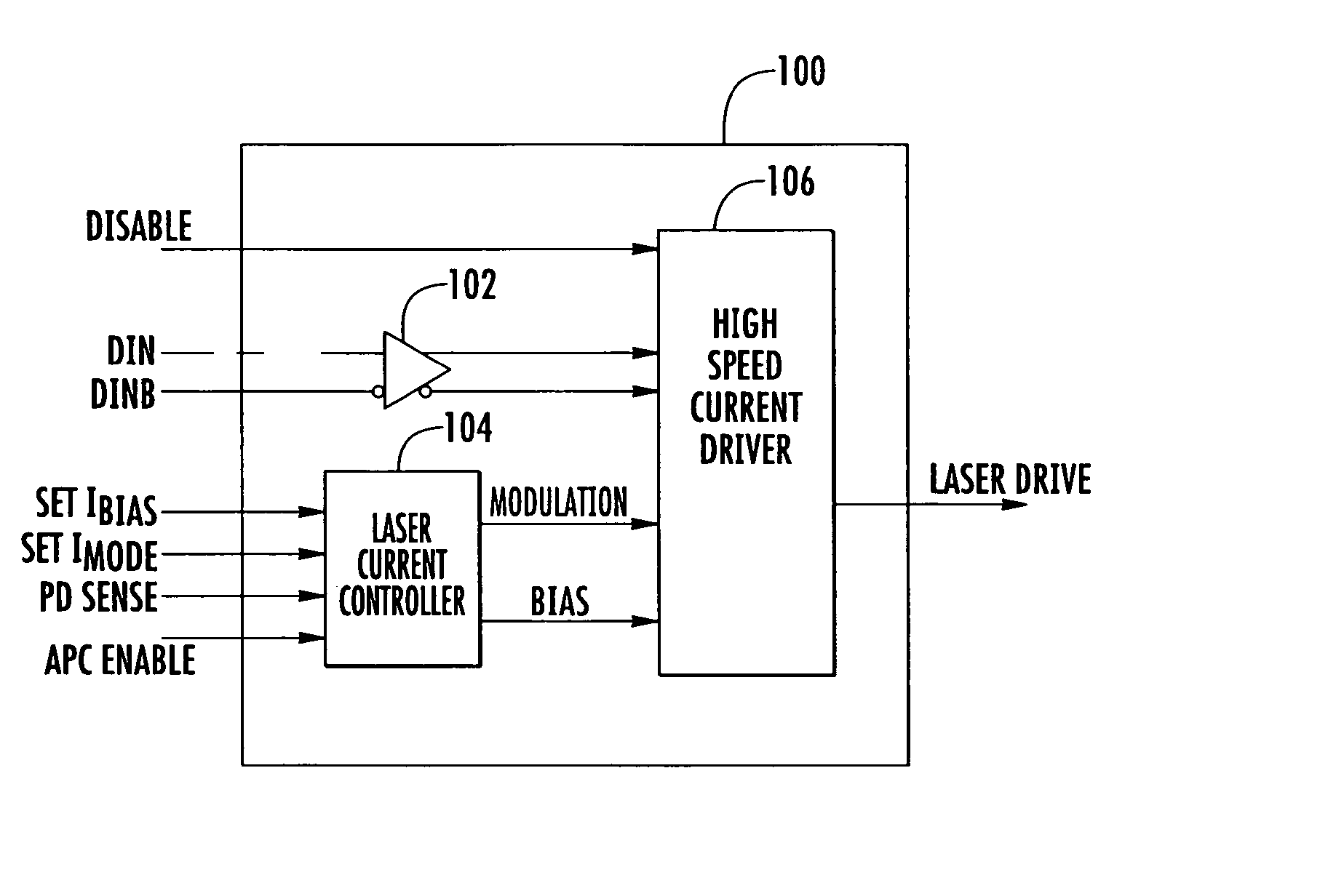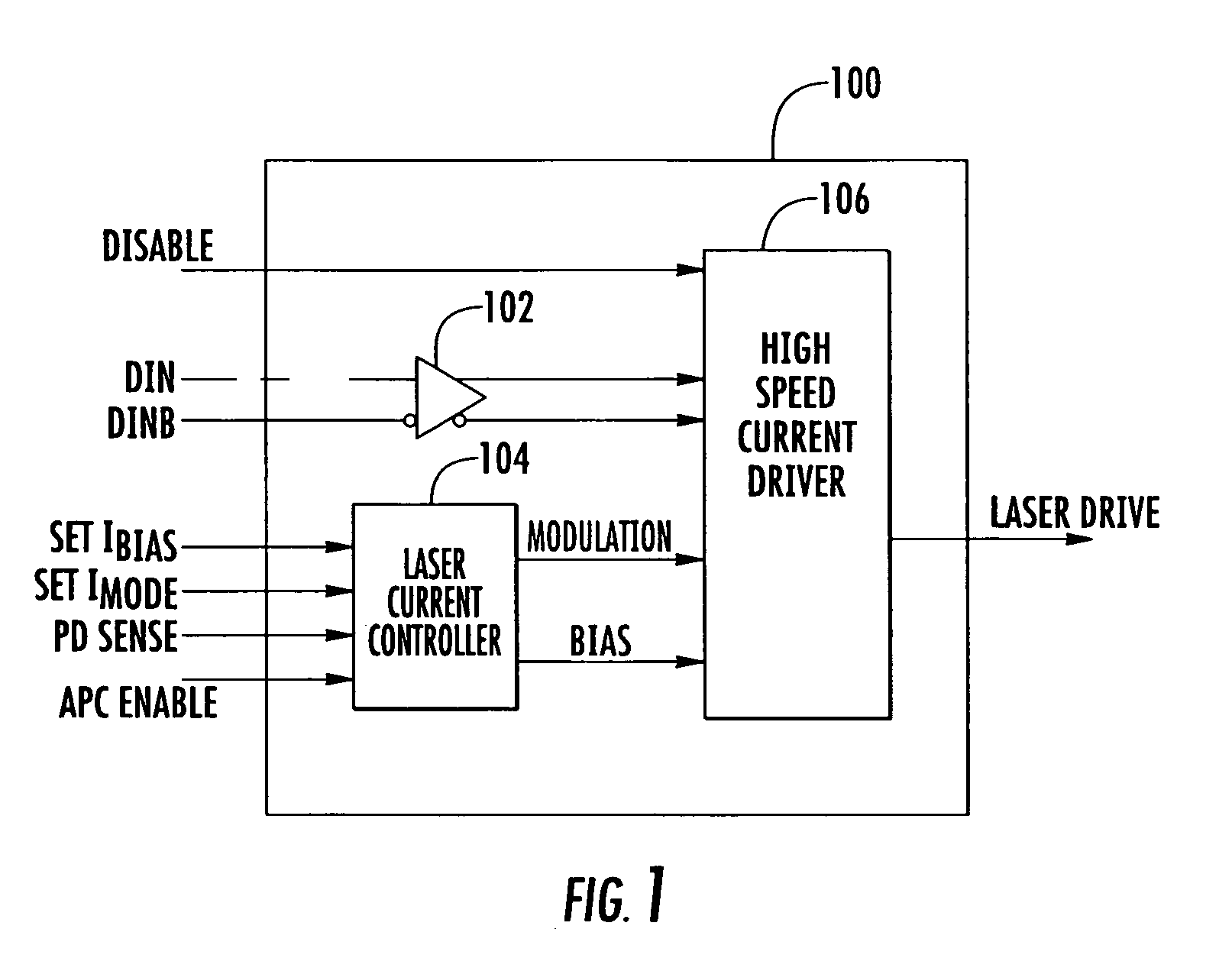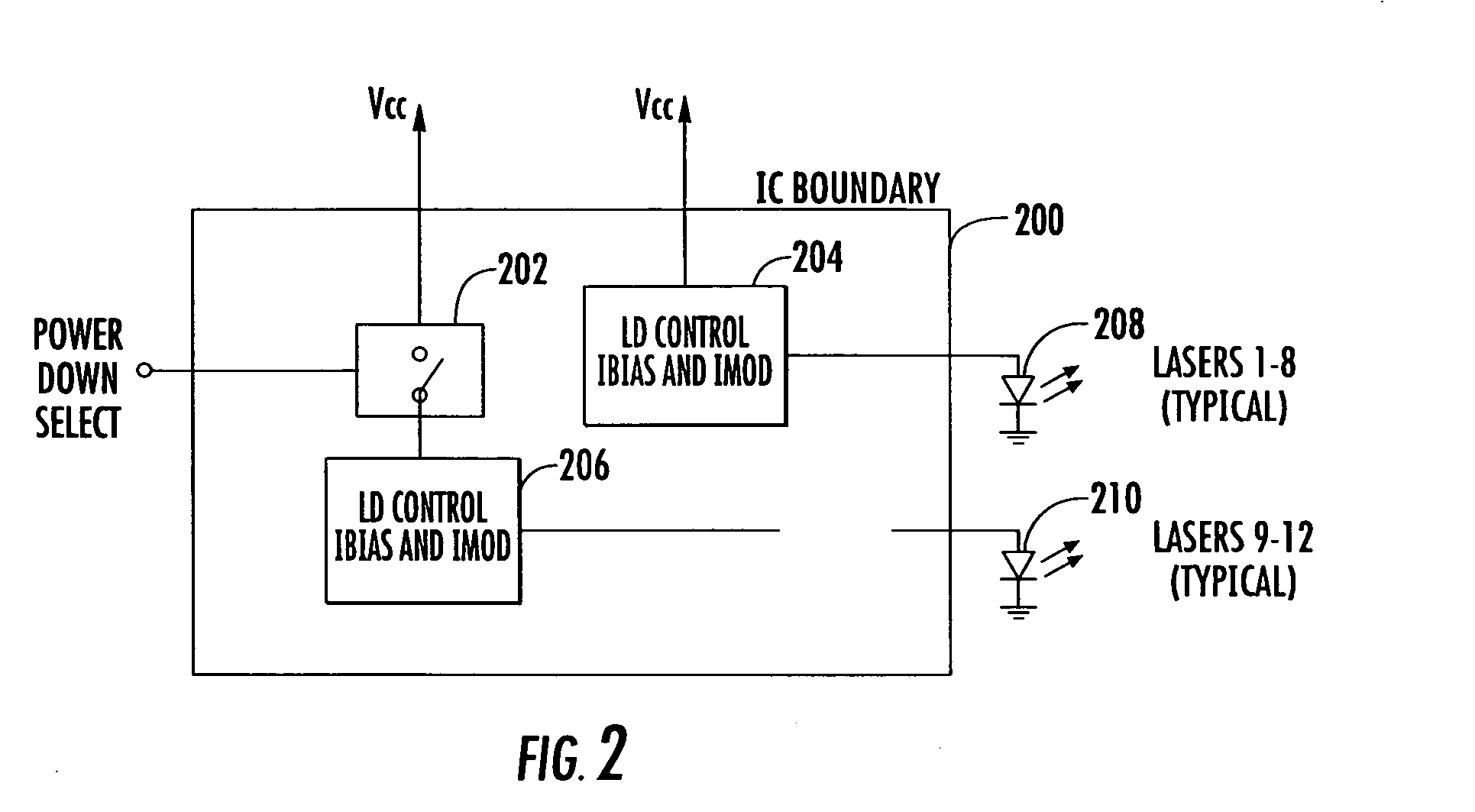High-speed laser array driver
a laser array and driver technology, applied in the direction of laser details, semiconductor lasers, electrical devices, etc., can solve the problems of degrading laser performance and changing laser characteristics during the operation of lasers, and achieve the effect of reducing baseline wander and flattening the dip presen
- Summary
- Abstract
- Description
- Claims
- Application Information
AI Technical Summary
Benefits of technology
Problems solved by technology
Method used
Image
Examples
Embodiment Construction
[0008] In one embodiment of the present invention, a power down feature is provided to disable one or more unused lasers so as to reduce power dissipation.
[0009] In another embodiment, a dual feedback system is used to provide feedback signals for the adjustment of modulation and bias currents delivered to a single laser or each laser in a laser array through the respective laser drivers. In this manner, the dual feedback system may be used to maintain average optical power and Optical Modulation Amplitude (OMA) within predetermined limit values. The feedback signals may be provided by one of the data lasers or by an additional control laser that operates at a lower frequency than the data lasers.
[0010] In yet another embodiment of the present invention, a transistor base leakage is used to emulate a large resistance element to result in a long time constant without the use of a large capacitor or large resistance.
[0011] In yet another embodiment of the present invention, a split...
PUM
 Login to View More
Login to View More Abstract
Description
Claims
Application Information
 Login to View More
Login to View More - R&D
- Intellectual Property
- Life Sciences
- Materials
- Tech Scout
- Unparalleled Data Quality
- Higher Quality Content
- 60% Fewer Hallucinations
Browse by: Latest US Patents, China's latest patents, Technical Efficacy Thesaurus, Application Domain, Technology Topic, Popular Technical Reports.
© 2025 PatSnap. All rights reserved.Legal|Privacy policy|Modern Slavery Act Transparency Statement|Sitemap|About US| Contact US: help@patsnap.com



